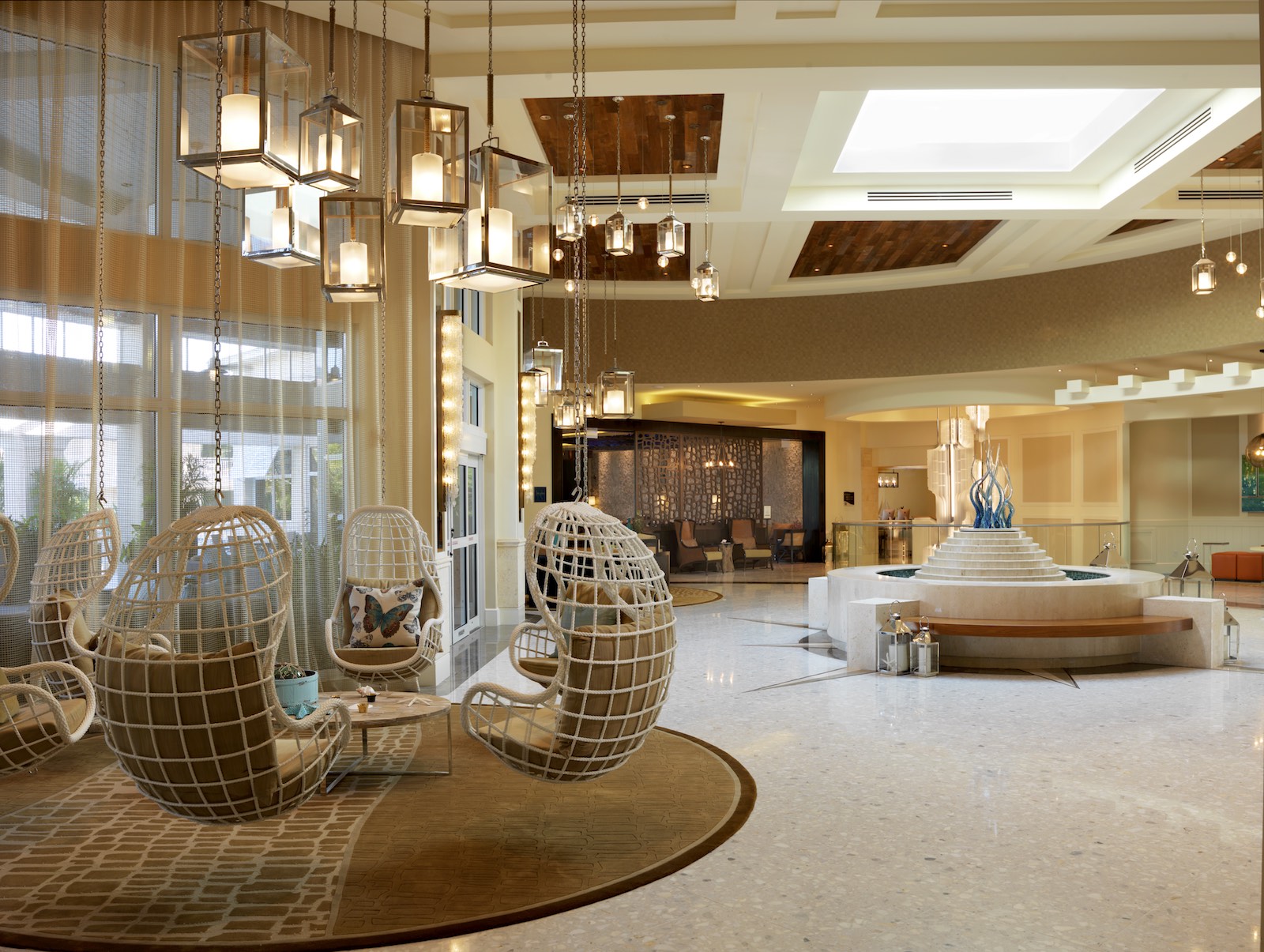by Meg Prendergast, Principal, The Gettys Group Companies
During a discussion on women and travel at the BLLA Travel Industry Executive Women’s Conference, the panelists and I enjoyed a conversation on the ways in which women have driven recent design needs in the hospitality market, specifically the trend of “bleisure” travel – trips in which business and leisure are both a consideration.
We know that women make an estimated 85 percent of all travel purchasing decisions [1], meaning hospitality professionals must look to this group for what’s new and next in travel. Yes, women like nice lighting in the restrooms and many of us might have an affinity for a beautiful in-hotel spa, but of course, our needs and expectations run more deeply.
Ever efficient multi-taskers, women recognize the importance of balance in our day-to-days; we juggle both career and life – whether “life” means tending to our job description, participating in the community, caring for children, taking time for self-care, spending time with friends and family or a blend of all the above. This multi-functional way of living is rooted in the way our brains function [2], which is why we seek travel experiences that enable us to take care of business while also enjoying ourselves and those around us. These design considerations go beyond hotels to multi-family residential buildings, senior lifestyle developments, cruise ships and more – the list continues to grow.
Travelers determine whether their stay will be positive or not within the first 60 seconds of arriving at a hotel. So, how can hotels and hospitality designers ensure that they’re attracting travelers with this set of complex desires?
Infuse a sense of place
Over the last decade, hospitality designers have made a point to create spaces that reflect their locations. Now we are being charged with prioritizing an experience being delivered before developing the finished design attributes. It has become a “must do” – in fact, 65% of guest loyalty intentions can be explained by satisfaction with interior design, regardless of service quality [3].
Bleisure guests require options to either dial up or tone down their levels of engagement based on the amount of time and interest they must put forth. Localized activity options – fitness walks, historical district tours, etc. – can engage guests and offer connections to the community. Food and beverage choices are important to today’s traveler as well, and a robust program that features the chef’s rooftop garden or nearby farms and purveyors can allow for healthy choices (or at least localized indulgences!) for both business and leisure travelers to enjoy.
Women want to discover and understand our environments as we travel around the world, even if only for an hour at a time. Hotels can incorporate design elements that connect visitors to the community or drive a level of engagement that will provide differentiation from a less purposefully designed competitor.
What happens with all this localization? The trend points toward a larger movement of attracting locals to hotels, rather than just travelers, but it has implications for bleisure travelers as well. When attending a business conference, would you prefer to visit a colorless, faceless space or feel energized by local culture each evening as you return from a busy day? The choice is simple for most travelers, and it’s imperative for hotels to keep pace with these expectations.
Provide opportunities to blend and extend
Whether travelers are attempting to add a little leisure to a business trip or find a convenient place to work while on vacation, hospitality designers and hoteliers must make a conscious effort to provide desirable areas to do both. That can be executed through many different means; spaces that are designed with flexibility in mind allow guests to experience the space as they see fit, and operations teams can provide guests and visitors with non-static physical environments.
From dry (and quiet!) seats around the pool with Wi-Fi access to lobbies with flexible meeting spaces that comfortably accommodate both business and social gatherings, mixing work and play is becoming easier than ever because of modifications designers are making in both public and private areas throughout hotel properties. Gone are the days of locking yourself in your hotel room working hard to meet a deadline or holing up in the business center to get something finished. Now, you can do so while you enjoy time with the family at the pool or have a craft cocktail from the bar with a colleague.
Make it convenient
There never seems to be enough time in the day, especially if one is trying to get work done while enjoying the attractions of a new city. That’s why hotel ownership needs to constantly look for ways to bring various amenities to individuals staying at their properties. Not only will that draw travelers in, but it will help meet the needs of busy travel schedules.
Rather than leaving the hotel to go on an excursion, travelers might attend activities and experiences at the same location they are staying. Looking for a latte art class? A craft workshop? A fun night of standup comedy? Many hotels now offer them on-site, so travelers can experience the city in between meetings, when there’s no time for a trip to another neighborhood venue.
Traveling women make up the most important demographic in hospitality, and we’ve made it clear how we like to travel: utilizing a blend of work and play. Because of that, hospitality professionals have made (and should continue to make) a concerted effort to increase the quality of environment, ease of orientation and feeling of arriving somewhere truly special. Most importantly, we must create a fully integrated experience in which both work and play feel natural and encouraged.
Sources:
- https://skift.com/2017/09/15/how-pinterest-helps-connect-brands-to-the-modern-female-traveler/
- http://www.bbc.com/news/science-environment-24645100
- Khanau, A. (2015). The impact of hotel interiors on customer’s loyalty intentions. Norwegian School of Hotel Management.
